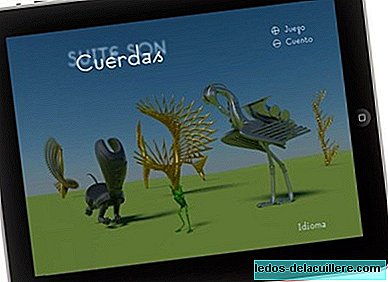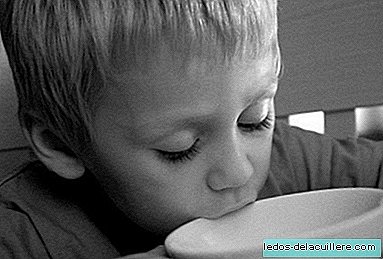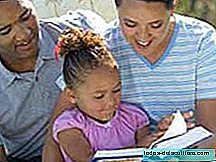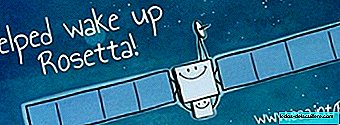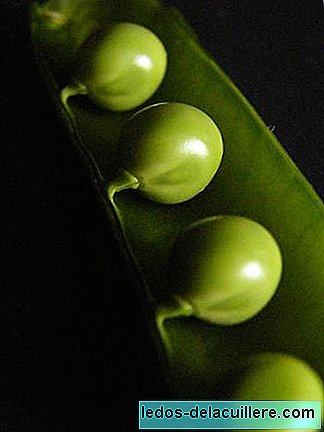
Continuing on our tour of vegetables in child feeding, today we stop at peas and green beans that can be introduced into the baby's diet.
The tender seeds of the legumes are considered vegetables, and therefore the baby can take them cooked and in the form of porridge when he begins the complementary feeding, at six months, unlike his older "sisters", the dried legumes, of which we will talk about later.
The term "vegetable", as we said in the introduction to this series of posts, includes vegetables and green or tender legumes, such as beans, green beans and peas.
In the ripening process of green peas and beans or green beans hardening of the pods and seeds occurs. But when these plants are immature, green or tender, they are edible and consumed as vegetables.
The most frequent to make the baby's first solid foods are peas and beans, which are often combined with potatoes, zucchini and meats or fish appropriate to the baby's age.
We will know what are the nutritional properties of these two vegetables, as well as their varieties and its way of preparation for complementary infant feeding.


Peas in infant feeding
The pea, which also receives the names of alverja, pea, arjeva or pea (Pisum sativum) is the small rounded, edible seed of the plant that is grown for production. Of some varieties the pods themselves can be consumed because they are very tender.
Peas can be consumed fresh or dried, but for the baby's first porridge we talk about these sweet peas, because there are some significant differences regarding their nutrient content that makes dry peas not suitable until the third trimester, like the rest of legumes.
Fresh green peas are sweeter and tastier, and contain much more water than dried peas, less protein, less fat and carbohydrates, so they are indicated for babies from six months.
When the pea is fresh, freshly picked (or frozen fresh), it has a sweeter taste than dried legumes, due to the presence of simple sugars, which as time passes, they become starch. It is then when the peas are less sweet, dry and more difficult to digest.
Peas are an important source of fiber and several vitamins. They are rich in vitamins of group B, which contribute to the proper functioning of the nervous system. Like thiamine (B1, very abundant in the common green pea, except in the dwarf pea and the tirabeque), riboflavin (B2), niacin and pyridoxine (B6).
It also contains folic acid, vitamin K and vitamin C, as well as small amounts of alpha and beta-carotenes (vitamin A precursors).
Peas contain minerals such as iron, phosphorus, magnesium, zinc and potassium.
Frozen or canned peas They contain less vitamins and minerals as a result of food processing.

Green beans in infant feeding
Green beans are also known as green beans, beans, bass, chauchas or green beans. They are flattened and elongated pods, in whose interior there is a variable number of seeds according to the species.
Although in the maturation process the walls of the sheath are hardened by the formation of fibrous tissues, in their immature form they are edible and consumed as vegetables.
There are over a hundred varieties of beans, which are classified into two large subspecies quite common and recognizable: both are suitable for child consumption boiled and crushed:
Beans of enrame: it is characterized by its thick and flattened sheath. They are bushes with long stems to be held with rods.
Dwarf beans: they have a narrower and rounded pod. Their bushes are low, so they can hold on their own.
Green beans are a food with a low caloric intake. They have less than 30 calories per 100 grams. This caloric content is due to the presence of carbohydrates, as well as the presence of a small amount of protein.
They are a good source of fiber, although their content is lower than that found in other vegetables. They contribute to the intestinal transit.
Its minerals include the presence of potassium and calcium, and to a lesser extent, iodine, phosphorus, iron and magnesium. Green beans are one of the poorest sodium vegetables because they are very sensitive to the salt concentration of the soil.
As for the vitamin content of green beans, they are a good source of vitamin C, folates (essential for neuronal development), and provitamin A or beta-carotene, as well as B2 and B6, present in smaller amounts.
All these nutritional properties contribute to the good development of the organism and the functioning of the different systems. In addition, it is a very digestive food, suitable for babies when they start complementary feeding after six months.
Mode of preparation of green beans and peas
Green beans should not be eaten raw. In addition to being indigestible, they have a toxic substance known as phaseolin that is eliminated during cooking.
Before cooking the green beans it is necessary to separate the longitudinal filament that some varieties have, as well as the hard ends. They are then washed and ready to be cooked.
To crush the green peas and beans you have to boil them or steam them. Do not overcook because they would lose much of their nutrients.
The cooking time depends on the hardness of the water we use and the type of pot. The peas are cooked before the beans, so if we cook them together it should be thrown into the pot after a few minutes of cooking the beans. For the beans, 15 minutes for the finest varieties and 25 for the thick ones may be enough until they soften. For peas about 10 minutes.
As we have said, these vegetables can be combined with other suitable from six months of the baby, such as potatoes, sweet potatoes, zucchini, squash ... This opens the range of nutrients, providing the baby's body with the benefits of different vitamins and minerals present in other vegetables.
Once cooked, peas and beans must be consumed soon because they quickly lose their nutrients. For the next day they can be stored in the refrigerator tightly covered. If we are going to take longer to consume them it is convenient to freeze them already made porridge and thaw in the refrigerator 24 hours before the baby will eat them.
As we see, green peas and beans are ideal vegetables for babies thanks to its nutritional properties and its easy digestion. First in porridge, then in small pieces, and finally on the plate next to the food of the whole family, they will be part of a healthy diet.




